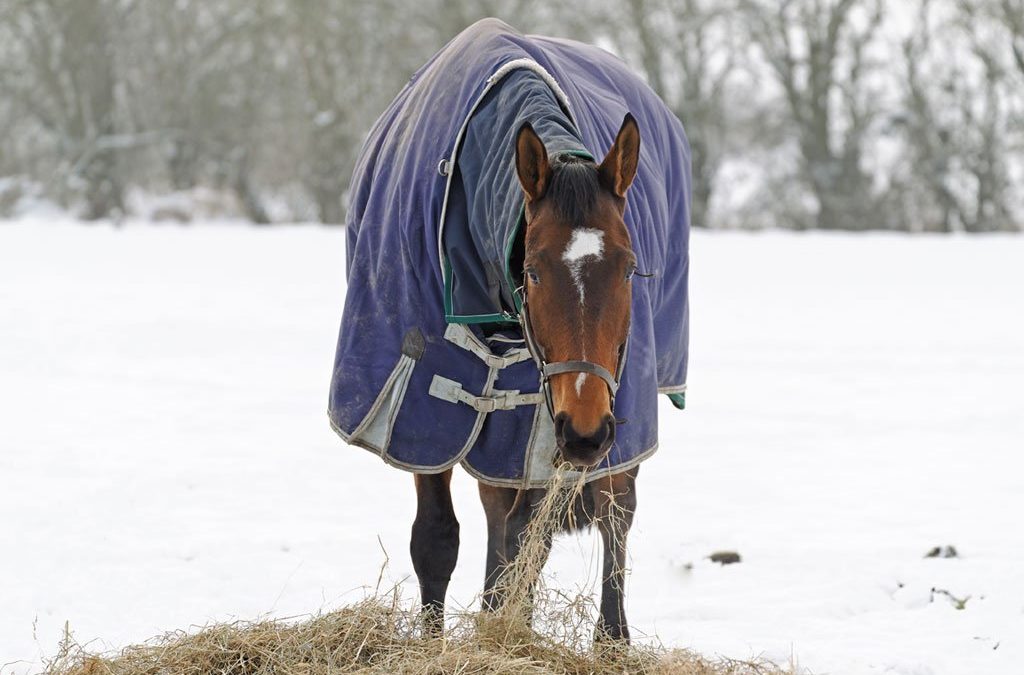Feeding and Management of Horses During Transition from Warm to Cool Weather
As the days shorten, good planning in conjunction with quality feeds and facilities can make the transition from warm autumn days into wintry nights a little less difficult for all involved.
 One of the most productive ways of keeping horses warm and supply nutrients is to provide free choice, good quality hay. The heat of fermentation when the hay is digested by microbes in the horse’s hindgut is the main source of warmth for the horse. The heat is produced during the biochemical conversion of fiber into volatile fatty acids (VFA’s). As the temperature drops, the higher fiber content of hay provides more fuel to the microbial populations. This is a great time of year to use up some of that older more mature hay that got a little too long before it was harvested!
One of the most productive ways of keeping horses warm and supply nutrients is to provide free choice, good quality hay. The heat of fermentation when the hay is digested by microbes in the horse’s hindgut is the main source of warmth for the horse. The heat is produced during the biochemical conversion of fiber into volatile fatty acids (VFA’s). As the temperature drops, the higher fiber content of hay provides more fuel to the microbial populations. This is a great time of year to use up some of that older more mature hay that got a little too long before it was harvested!
Some horses will require additional supplementation to keep condition as it begins to cool off and pasture grasses begin to go dormant. Be sure to choose a concentrate that is specifically designed for the type of horse being fed, and always introduce a new feed slowly over a 7 -10 day period. It is also very important to group similar types of horses in a field so that feeding time is less stressful.
Some type of shelter to provide protection from wind, rain and ice should be available to pastured horses. Snow is not as hard on horses as an icy rain because a layer of snow on the horses back acts as an insulator. Horses that are continuously exposed to wet weather are very hard to keep weight on since much of the energy derived from feed is diverted to producing body heat. Feeding hay in shelters is a great way to train horses to come in out of the weather to eat.
Make sure the source of water in a pasture remains viable. Horses prefer tepid water to ice cold or slushy water, so tank heaters should be used if automatic heated waterers are not available. Colic occurs more often in winter when horses are eating a lot of forage and then not drinking much water. It is imperative that timid horses out in large herds are not run off by more dominant pasture mates. If more than five horses share a water source, setting up another tank may be beneficial, to ensure all horses have access to water at all times.
With a little foresight, good quality forage and concentrates, shelter, water and some blankets, horses and humans alike can weather the cold!
This blog post was originally posted on Tuesday, September 6th, 2011 at Equine Nutrition and Health Services Blog. Blog article was re-posted with permission from blog owner, all rights reserved.

